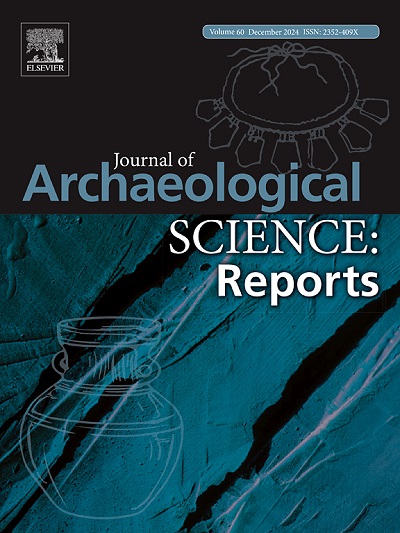Phytolith evidence for rice cultivation and domestication in late-Dawenkou culture in the middle reaches of the Huai River, China
IF 1.5
2区 历史学
0 ARCHAEOLOGY
引用次数: 0
Abstract
The cultivation and domestication of rice (Oryza sativa) represents a pivotal development in East Asian agriculture; its trajectory during the Neolithic period remains a subject of considerable interest. In the middle reaches of the Huai River, rice farming emerged as a key agricultural practice in the late-Dawenkou culture (ca. 4,500–4,300 BP), though research on the environmental conditions for cultivation and domestication processes is scarce. Addressing this gap, this study presents a phytolith-based analysis of the Gaixia site, a significant late-Dawenkou settlement; 136 soil samples from various archaeological contexts at the Gaixia site, including ash pits, ditches, and house foundations, were analyzed for their phytolith assemblages and contents, focusing on rice-specific morphotypes. The results revealed a dominant presence of rice phytoliths (up to 37.78 % in content and 81.88 % in ubiquity), suggesting that rice was the main crop during this period. The sensitive to fixed phytolith ratio averaged 1.86 ± 0.83, suggesting a cultivation environment with ample water and likely involving controlled water management practices in paddy fields, supporting the water conditions required for rice cultivation in a relatively warm-dry climate. Furthermore, the high frequency of rice bulliform phytoliths with ≥9 fish-scale decorations (73.91 %) and larger sized bulliform point to advanced rice domestication. Comparisons with earlier periods (e.g., Shunshanji and Shuangdun cultures) suggest progressive intensification of rice cultivation and domestication in the region. This research provides critical insights into the agricultural developments and environmental adaptations shaping the rice farming systems of the late-Dawenkou culture, broadening understanding of rice cultivation’s role in the development of East Asian Neolithic agricultural societies.
淮河中游大汶口文化晚期水稻栽培驯化的植物岩证据
水稻(Oryza sativa)的栽培和驯化代表了东亚农业的关键发展;它在新石器时代的轨迹仍然是一个相当有趣的主题。在淮河中游,水稻种植在大汶口文化晚期(约4500 - 4300年前)成为主要的农业实践,尽管对种植和驯化过程的环境条件的研究很少。为了弥补这一空白,本研究对大汶口晚期重要聚落盖下遗址进行了植物岩分析;本文分析了盖夏遗址不同考古背景下的136个土壤样本,包括灰坑、沟渠和房屋地基,分析了它们的植物岩组合和含量,重点分析了水稻特有的形态。结果表明,水稻植物岩以植物岩为主(含量为37.78%,普遍度为81.88%),表明该时期以水稻为主要作物。对固定植石比的敏感性平均为1.86±0.83,表明该地区的栽培环境水分充足,可能涉及水田的控制用水管理措施,支持相对温暖干燥气候下水稻种植所需的水分条件。具有≥9个鱼鳞装饰的水稻球形植物岩的频率较高(73.91%),且球形尺寸较大,表明水稻驯化程度较高。与较早时期(如顺山集和双墩文化)的比较表明,该地区水稻种植和驯化的逐步加强。本研究为了解大汶口文化晚期水稻种植系统的农业发展和环境适应提供了重要见解,拓宽了对水稻种植在东亚新石器时代农业社会发展中的作用的理解。
本文章由计算机程序翻译,如有差异,请以英文原文为准。
求助全文
约1分钟内获得全文
求助全文
来源期刊

Journal of Archaeological Science-Reports
ARCHAEOLOGY-
CiteScore
3.10
自引率
12.50%
发文量
405
期刊介绍:
Journal of Archaeological Science: Reports is aimed at archaeologists and scientists engaged with the application of scientific techniques and methodologies to all areas of archaeology. The journal focuses on the results of the application of scientific methods to archaeological problems and debates. It will provide a forum for reviews and scientific debate of issues in scientific archaeology and their impact in the wider subject. Journal of Archaeological Science: Reports will publish papers of excellent archaeological science, with regional or wider interest. This will include case studies, reviews and short papers where an established scientific technique sheds light on archaeological questions and debates.
 求助内容:
求助内容: 应助结果提醒方式:
应助结果提醒方式:


